OCTOBER



Reflecting on a career in corrections
COLORADO COUNTRY LIFE IS THE OFFICIAL PUBLICATION OF THE COLORADO RURAL ELECTRIC ASSOCIATION.
COMMUNICATIONS STAFF
Cassi Gloe, CCC, Publisher | cgloe@coloradocountrylife.org
Kylee Coleman, Editor | kcoleman@coloradocountrylife.org
Melinda Taylor, Editorial Assistant mtaylor@coloradocountrylife.org
ADVERTISING
advertising@coloradocountrylife.org | 720-407-0712
National Advertising Representative: American MainStreet Publications, 611 S. Congress St., Suite 504, Austin, TX 78704 | 800-626-1181
Advertising Standards: Publication of an advertisement in Colorado Country Life does not imply endorsement by any Colorado rural electric cooperative or the Colorado Rural Electric Association.
Colorado Country Life (USPS 469-400/ISSN 1090-2503) is published monthly by the Colorado Rural Electric Association, 5400 Washington St., Denver, CO 80216-1731. Periodical postage paid at Denver, Colorado. ©Copyright 2024, Colorado Rural Electric Association. Call for reprint rights.
EDITORIAL
Denver Corporate Office: 5400 Washington St., Denver, CO 80216 info@coloradocountrylife.org | 303-455-4111
Editorial opinions published in Colorado Country Life shall pertain to issues affecting rural electric cooperatives, rural communities, and citizens. The opinion of CREA is not necessarily that of any particular cooperative or individual.
SUBSCRIBERS
Report change of address to your local cooperative. Do not send change of address to Colorado Country Life. Cost of subscription for members of participating electric cooperatives is 30 cents per month, paid from equity accruing to the member. For nonmembers, a subscription is $15 per year in-state/$20 out-of-state.
POSTMASTER
Send address changes to: Colorado Country Life
5400 Washington St., Denver, CO 80216

BY KYLEE COLEMAN EDITOR
My friend Liz came to visit me when I was stuck on bedrest about 30 weeks into my first pregnancy. Those days at home were spent watching movies, reading What to Expect When You’re Expecting, and flipping through my small collection of “how-to” baby books. Keep in mind this was before remote work, smartphones, and social media … you can imagine that I was looking for anything to help break up the days a little bit.
So when Liz showed up with a set of six wooden double-pointed knitting needles and two skeins of yarn, I was excited to see what she had in store to help me pass the time. That afternoon, she taught me how to knit the sweetest little baby hat.


I was always a crafty girl. I sewed my own Easter dresses, quilted, and dabbled in paper crafting and scrapbooking. But when I got knitting needles and yarn in my hands, it felt so natural and comforting, creative, and productive.
That first baby hat I knit sent me on a journey of great delight. I’ve now spent decades living and breathing knitting, purling, yarn “over-ing,” and stitching amazing creations — socks, blankets, scarves, mittens, and even the cutest pair of monster pants for my nephew.
On page 22 of this issue, you’ll find other Coloradans who have fallen in love with their creative process and work. October 1 is World Handmade Day, and we are happy to celebrate Colorado makers whose arts and crafts inspire us.

Scan this QR code with your smartphone or tablet camera and take a short survey to share what you think about this magazine. You can also email info@coloradocountrylife.org with your feedback.
Enter this month’s
We love hearing from you! Visit www.coloradocountrylife.coop to find ways to connect with Colorado Country Life. You’ll find contests, giveaways, and more on the Reader Engagement page.
As I write this column in early September, I’m crossing my fingers that Colorado residents and communities get through the rest of 2024 without being impacted by more wildfires. Some of this year’s wildfires have caused significant damage to homes and other structures in addition to the loss of life.
Wildfires are always top of mind for Colorado’s electric co-ops. We have witnessed numerous devastating wildfires over the last 10 years or so, with the worst fires in Colorado history taking place during that period. While none of those fires were caused by electric co-op facilities, we’re always concerned about the possibility that co-op lines or other equipment could spark a fire in co-op territory.
Regardless of the ignition source of a wildfire, as we have seen all too often, the consequences can be devastating. While our first concern is always for the safety of people and property, we are also concerned about the ability of electric co-ops to provide electricity in the event power infrastructure is damaged or destroyed. Every electric co-op in the state takes very seriously its responsibility to provide the power that is needed to sustain the folks who live in co-op service territories.
As I’ve noted in this space many times, Colorado’s electric co-ops go to great lengths
to reduce the risk of co-op facilities igniting a wildfire. By way of undergrounding lines, installing fire-resistant poles and wires, and changing operating protocols, co-ops and other electric utilities in Colorado are investing millions of dollars to help keep our communities safe. Co-ops are also deploying new technology that will help assist in the early detection of wildfires.
Even with these investments, given the thousands of miles of power lines that cross the state, there is always the possibility that a fire could be caused by co-op equipment.
You may think that co-ops and other utilities are protected by insurance policies that would pay for claims brought in the event of a fire that caused damages or injuries to the public. That’s just not the case. Insurance companies across the country are either refusing entirely to provide insurance against these risks or are charging premiums that cost nearly as much as the policy coverage. Given the extraordinary damages that have resulted from fires in California and other states that were caused by power lines, insurance companies have basically decided not to insure against those risks.
Knowing that the wrong spark in the wrong place could literally bankrupt a co-op, we’re exploring legislative solutions that might give co-ops some liability

protection. That protection would not come easily; it would only be available to those co-ops or other electric utilities that could demonstrate that they have taken all reasonable steps to mitigate the risk of a wildfire. If a co-op has taken all reasonable measures to reduce the risk that its facilities could cause a wildfire, we believe that those co-ops should receive some protection from legal liability.
You will likely be hearing more about this issue in the coming months as we work with our member co-ops to educate the public and the Colorado General Assembly. CREA and its members believe that wildfires pose an existential risk to co-op communities and to the ability of co-ops to serve those communities. We hope to find a way to mitigate that risk in the coming months and will keep you apprised of our progress.
Kent Singer is the executive director of CREA and offers a statewide perspective on issues affecting electric cooperatives. CREA is the trade association for 21 Colorado electric distribution co-ops and one power supply co-op.

BY JAMES DULLEY
Q: I plan to use my fireplace more to lower my utility bills. I see some deteriorated spots on the outside of the chimney, and it has not been cleaned recently. What type of maintenance items can I do myself?
A: Before doing any chimney maintenance yourself, have a professional chimney sweep inspect and clean it before you build your first fire. House fires due to chimney issues occur in tens of thousands of homes each year, claiming many lives and costing hundreds of millions of dollars.
Although the deteriorated spots on the brick chimney need to be addressed, problems inside the chimney present the greatest risk. Creosote buildup is the primary problem — it is very flammable when it gets hot.
When creosote catches fire inside the chimney, it is not always obvious. One telltale sign is a sudden increase in the draft up the chimney from the intense heat, but this still can be easy to miss.
The intense heat may cause the tiles — which protect the chimney — to crack and come loose. This allows heat from fires to penetrate the brick and start a fire in your home. Sometimes loose tiles will block the chimney, and the smoke drafting back indoors will alert you.
When the professional cleans the chimney, puffed black creosote may mean there was a chimney fire. Once it is cleaned, an inspection along the chimney’s entire length with a camera should be done to check the tiles and mortar.
Be leery of a chimney sweep or company that does not do the camera inspection and claims you need a new liner or sealing procedure costing thousands of dollars. An unscrupulous chimney professional
claimed my chimney needed a liner, but a subsequent camera inspection by a different company indicated the tiles and mortar were sound.
For those who are handy and not afraid of heights or do-it-yourself projects, products are available to make many chimney repairs. Companies — such as SaverSystems — carry supplies for professionals and offer their products in smaller quantities for homeowners to buy.
Although brick feels very hard, it is permeable to water. Over time, moisture can deteriorate the mortar. This is particularly bad with freeze-thaw cycles over winter.
Inspect all the bad spots on the mortar using a chisel and hammer. Remove all the loose mortar. Use cement-colored elastomer to fill the spots. Afterward, coat the entire chimney exterior with a water repellent formulated for brick.
If the mortar is bad, the chimney crown likely needs some repairs. Chip away any loose cement and fill in the pits with an elastomer crown repair. Some types are formulated specifically to cure in freezing temperatures.
The metal flashing between the roof and chimney is the final area to seal. If the flashing is badly rusted, replace it. Most often, brushing on a thick coating of flexible flashing compound is an adequate fix.
Whether you hire a professional to make repairs or do some of them yourself, check your chimney before the first fire of the winter season.
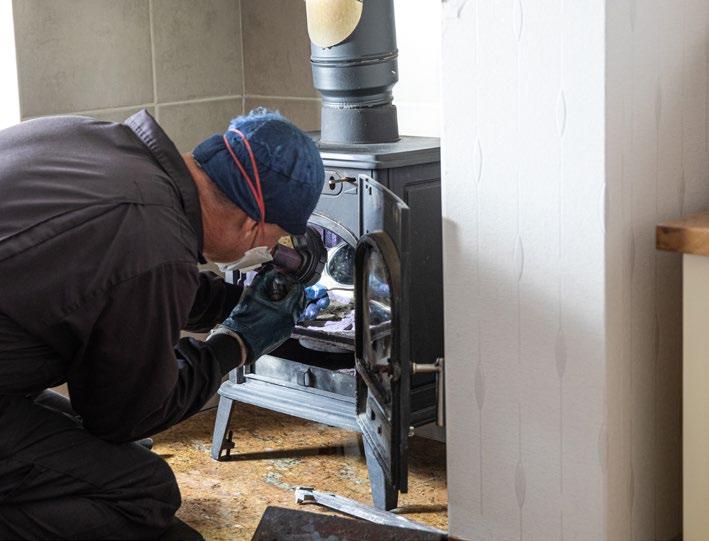


September’s Ask the Energy Expert featured links to find information about tax credits for energy efficiency improvements. We published an incorrect URL. The correct web address is energyoffice.colorado.gov/hptc
In June and July, Sangre de Cristo Electric Association and six other Colorado electric co-op line crews traveled to parts of Arizona to help electrify homes on Navajo Nation. SDCEA sent a four-person crew to build electric infrastructure near Kayenta, Arizona. SDCEA linemen Josh Saar, Colton Blankenbeckler, Caden Creamer, and Lucas Montgomery worked on the project.
MAILING ADDRESS
P.O. Box 2013
Buena Vista, CO 81211-2013
STREET ADDRESS
29780 North U.S. Highway 24 Buena Vista, CO 81211
ph 719-395-2412
tf 844-395-2412
email info@myelectric.coop web www.myelectric.coop

Facebook.com/SDCEA.Inc
X: @SDCEA_Inc
Instagram: sdceaenergy
More than 13,000 families living on Navajo Nation do not have basic access to electricity at home.
An initiative between the Navajo Tribal Utility Authority and the American Public Power Association, Light Up Navajo works to change that statistic and to change people’s lives. “It is hard to believe that in 2024 there are still families in the United States that have never experienced having electricity,” Colorado Rural Electric Association Board President Steve Valdez said. CREA is the trade association representing 21 Colorado electric co-ops across the state.
“The Light Up Navajo project was a good experience. We spent a week building power line for people on the Navajo Nation in northeast Arizona. Unlike our day-to-day work, they have never had the opportunity to have grid power in their life,” Montgomery said. “The lady we built power to the first couple days was living without power for 85 years, and she was very grateful when we set the meter. She said she never got to sleep at night with a fan on and she was able to use the lights to do things at night rather than using a lantern.”


Some NTUA applicants have waited years for electricity at home. Challenges include infrastructure limitations, supply chain issues, and siting and permitting considerations. Melissa, a new NTUA customer whose home was connected in June, had waited one year for electricity. “I purchased my home last year and was trying to take care of my family,” she said. She and her kids lived with Melissa’s parents during that time. “Now my kids have electricity and we’re going to be forever grateful,” she said, expressing thanks to the Colorado crew that worked to connect her home.
“NTUA was the power company we were working for, and they treated us very well. They made sure we were taken care of all day, bringing us lunches and snacks. This helped tremendously since we were working in 100–118-degree temperatures. The people we worked to bring power to live a very different lifestyle than what we are used to. It was awesome to be a part of a project that will help them live just a little bit easier,” Montgomery said.
“I learned some new ways of building line that we had never really thought of, and I always think it’s nice to learn a few new tricks from lineman around the country,” Montgomery added. “All around, I’m very grateful for the opportunity and proud that our company was a part of OCTOBER 2024
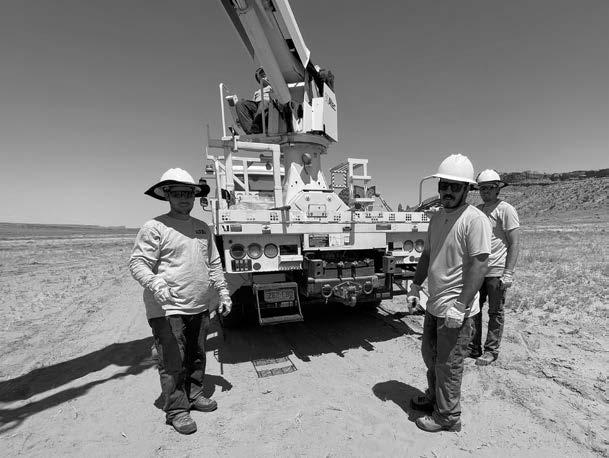
such a good cause.”
Since 2008, NTUA and volunteer crews have connected more than 7,500 homes to receive electricity. This year’s mission was to connect at least 150 homes. Volunteer crews surpassed that goal and helped connect 170 homes.
“Participating in projects such as Light Up Navajo are important because they exemplify the cooperative principle of Concern for Community,” Valdez concluded. “Volunteers banding together to improve quality of life is how co-ops got their start. Today, Colorado’s electric co-ops are still improving the quality of life in rural areas — it’s who we are.”


SDCEA’s Plant Accountant Jenny Nall was a featured presenter at the prestigious Tax, Finance & Accounting Conference for Cooperatives, which took place at the end of July in Orlando, Florida.
Nall delivered an insightful presentation on the IRS requirements for reporting cash payments. This topic is crucial for cooperatives across the country, and Nall’s expertise and innovative approach in compliance in this area have earned SDCEA recognition on a national stage.
The conference also featured presenters from North Carolina-based Blue Ridge Energy, which serves 78,000 meters, and First Electric Cooperative, boasting 103,000 members near Jacksonville, Arkansas. Representing SDCEA’s 14,500 member accounts, Nall’s presentation contributed to the topic of smaller cooperatives within the industry.
“Being invited to speak alongside representatives from such large and well-regarded organizations is a tremendous honor for both Jenny and SDCEA,” said Sarah Crites, SDCEA Chief Financial Officer. “This invitation reflects Jenny’s dedication and innovation in the field of cooperative finance and accounting. We are extremely proud of Jenny and the recognition of our cooperative’s work.”
In September, Sangre de Cristo Electric Association temporarily relocated our business office in Buena Vista to the Railroad Row Offices at 211 Tabor St., Suite 101.
This location, pictured lower right left side, is north of Town Hall. This move is necessitated by a project to replace SDCEA’s non-functioning HVAC system. Construction is expected to be completed in February 2025. During this period, the SDCEA business office on Highway 24 will be inaccessible.
Operations: All SDCEA operations will continue as usual. There will be no changes to office hours, phone numbers, mailing addresses, or other services such as outage response.
If needed, you may come to the temporary offices to receive help with a billing question, speak with our engineering department, or pay your bill.
Drop Box: Our drop box at the Highway 24 location will remain available for your convenience and will be checked daily. There is no drop box option at the Tabor Street location.

If you have any questions, please email us at info@myelectric. coop or call our office toll-free at 844-395-2412.
Thank you for your patience and understanding during these next several months.

Take advantage of Sangre de Cristo Electric’s (SDCEA) new On-Bill Repayment Program! Upgrade your home with energy-efficient appliances like heat pump water heaters, electric HVAC, windows, doors and insulation. No money down, no credit check, and pay back upgrades over time on your electric utility bill.
+ LEARN MORE AT myelectric.coop/electrifyandsave
STACK YOUR SAVINGS WITH STATE AND FEDERAL REBATES
+ SDCEA REBATES myelectric.coop/energy-efficiency/energy-efficiency-credit-programs/
+ FEDERAL AND STATE REBATE CALCULATOR (Contractor must be State qualified) homes.rewiringamerica.org/calculator
Ah, the joys of having a washer and dryer in your home. There’s no waiting for a machine, no coin slots, and no one taking out your wet clothes if you aren’t right there when the cycle ends.
Although it’s cheaper per load and much more convenient to do laundry at home, there’s a somewhat hidden cost to consider, and that’s the energy it takes to run your washer and dryer.
What appliances in your home use the most energy? The hot water heater is the appliance that costs the most to run. Right behind it is the washer and dryer’s combined energy use. (Although not considered appliances by many, heating/cooling tops the list, followed by the hot water heater.)
A dryer requires more energy to run than a washer, but there are ways to reduce your washing costs, too (think hot water versus cold). To save money in your laundry room, consider these tips:
• When using your washing machine, select the right amount of water for the load – that is, don’t select the “extra large” setting when doing a small load. In fact, consider waiting to do laundry until you have full loads to conserve water.
• Use cold water to save the money you spend heating water. Some laundry detergents are designed to tackle stains in cold water. Using warm water instead of hot can cut a load’s energy use in
• Use dryer balls, which help separate clothes and get more air to them, cutting drying time.
• Utilize lower settings when you use the dryer. Even if your dryer runs longer, you’ll use less energy and be less likely to over-dry your clothes.
• Clean the lint out of your dryer between loads and scrub the filter once a month to remove buildup.
• Put like items together since lighter-weight clothes take less time to dry. Drying towels and heavier cottons take longer.
• Use the moisture sensor option on your dryer if it has one.
• Wear clothes more than once between laundering them (although don’t wait until your jeans can stand by themselves).
• When purchasing a dryer, consider an Energy Star version, which uses 20 percent less energy than a conventional model.
• Energy Star-certified washers use about 25 percent less energy and 33 percent less water than regular clothes washers.
• Thoroughly clean your dryer’s vents and duct system at least twice a year.
To learn more about how much you are spending to run your washer and dryer each year, refer to the appliance energy use calculator at www.energy.gov.

1. Use cold water to wash your clothes.
2. Unplug battery chargers when not in use.
3. Skip the heat-dry setting on your dishwasher.
4. Unplug appliances and electronics not in use.
5. Run full loads of laundry instead of several smaller ones.
6. When drying clothes, include a dry towel for the first 20 minutes.
7. Keep your refrigerator at 35° to 38°F and your freezer at 0°F.
8. Reduce the setting on your hot water heater.
9. Use smart power strips that shut o power to items not in use.
10. When buying new appliances, consider ENERGY STAR versions.

The Journey Air Elite features the latest carbon fiber technology for the ultimate in portability and performance
Mobility issues affect over 1 in 5 Americans. These individuals, and their loved ones, know how decreased mobility can result in loss of independence, pain and falling hazards. They are often stuck at home, missing out on a variety of activities, in a vicious cycle that diminishes their quality of life. In the past, mobility devices like scooters and power chairs were too heavy and bulky to transport easily. Now, carbon fiber material invented for the aerospace program has been used to create the ultimate mobility device. It’s called the Journey Air Elite … and there’s nothing else like it on earth.
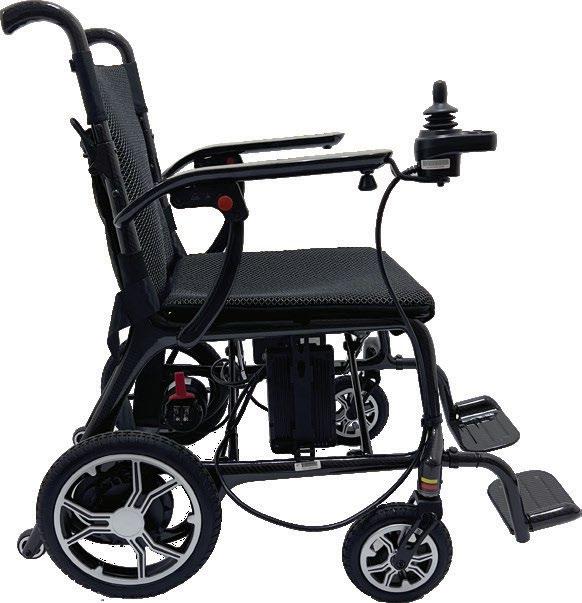
At only 26 pounds*, the Journey Air Elite combines lightweight portability with world class performance. It’s simple to use joystick and powerful dual-motor drive system enables you to zip around quickly and safely. It’s easy to maneuver, never tips, fits easily through doorways, and can go right up to a table or desk. Once you are done, just one pull on the seat handle folds it up. There’s a fold-down back to make it even easier to stow and store. It features flat-free tires and rear antitippers for added convenience and safety.
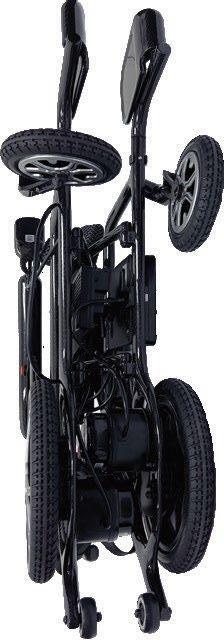
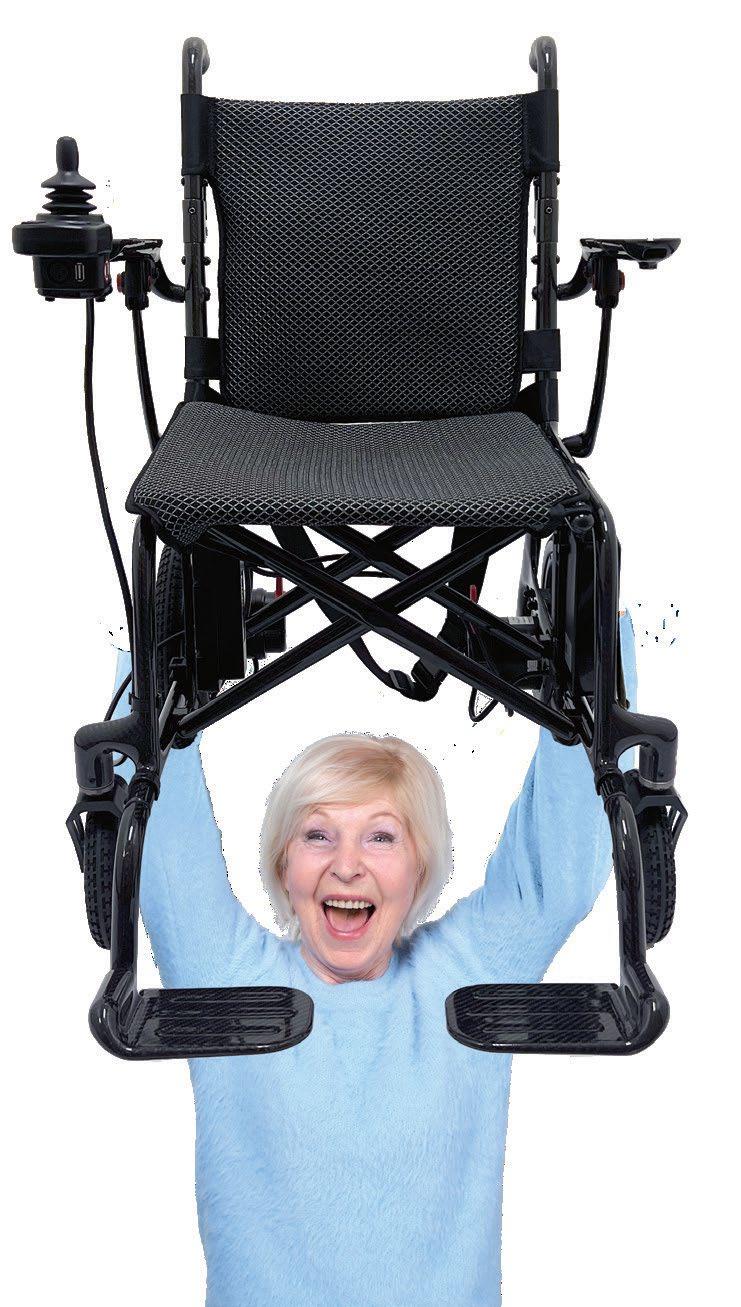
Just imagine how this chair can improve your life and make it easier for loved ones and caregivers to accompany you to activities and events you would have missed in the past. Don’t spend another day stuck at home. Call today, and a helpful, knowledgeable consultant will help you get a Journey Air Elite of your very own. Don’t wait –call now!
•
•
•




We can all rely on a grilled cheese sandwich to be an easy stand-in for a meal. Short on time? Grilled cheese. Not sure what to make for dinner? Grilled cheese. Forgot to thaw the chicken? Grilled cheese! While a simple grilled cheese sandwich is delicious on its own, adding an apple offers crunch and sweetness to make it extraordinary.
Servings: 2
Ingredients
1 tbsp. butter
4 slices sourdough bread
1 tsp . honey mustard, plus additional for serving (optional)
4 slices cooked bacon
1 Envy apple, cored and thinly sliced
1 3/4 oz. Brie cheese, sliced
Instructions
Butter one side of each slice of bread.
Lay out two slices of bread, buttered sides down. Top with honey mustard, then layer with two bacon slices, apple slices, and brie cheese slices. Top with remaining bread slices, buttered sides up, to create two sandwiches.
Heat a grill pan or skillet and cook sandwiches until golden brown on each side and cheese begins to bubble.
Envy apples are a cross between Braeburn and Royal Gala apples. They have balanced sweetness and a satisfying crunch.
Source: www.envyapple.com/us/


Cut sandwiches in half and serve with a side salad or extra honey mustard, if desired.
Recipe and photo of sandwich courtesy of Envy Apples.

Send yours to Recipes c/o Colorado Country Life, 5400 Washington St., Denver, CO 80216. Email recipes@coloradocountrylife.org o r submit it online through the Reader Engagement page on our website at www.coloradocountrylife.coop



















Colorado Country Life Holiday Gift Guide appears in the November and December issues. Just send us a photo of your product, your company name, contact information, and a 25-word product description. We do the rest! SECURE YOUR SPOT TODAY and make your product SHINE!
RATES AND SPECIFICATIONS
Print Circulation: 175,000
Readership: 690,000
Issues: November and December 2024
• Space reservation deadline: October 1 and November 1 (First of the month, one month prior to each issue)
• Rates: one month: $508.00 or two months: $965.20




Reader information based on GfK MRI Research Inc. Custom Division.
Publication Title: COLORADO COUNTRY LIFE ; Publication No.: 469-400; Filing Date: September 17, 2024; Issue Frequency: Monthly; No. of Issues Published Annually: 12; Annual Subscription Price: $15; Complete Mailing Addresses of Publisher, Editor, and Managing Editor Publisher: 5400 Washington Street, Denver, CO 80216; Editor: Kylee Coleman, 5400 Washington St., Denver, CO 80216; Managing editor: Not applicable; 10. Owner Full Name: Colorado Rural Electric Association; Complete Mailing Address: 5400 Washington Street, Denver, CO 80216; Known Bondholders, Mortgages, and Other Security Holders Owning or Holding 1 Percent or More of Total Amount of Bonds, Mortgages, or Other Securities: None. The purpose, function, and nonprofit status of this organization and the exempt status for federal income tax purposes: Has not changed during preceding 12 months.
I certify that all information furnished on this form is true and complete. I understand that anyone who furnishes false or misleading information on this form or omits material or information requested on the form may be subject to criminal sanctions (including fines and imprisonment) and/or civil sanctions (including civil penalties).

Cassi Gloe, Publisher 09/17/2024




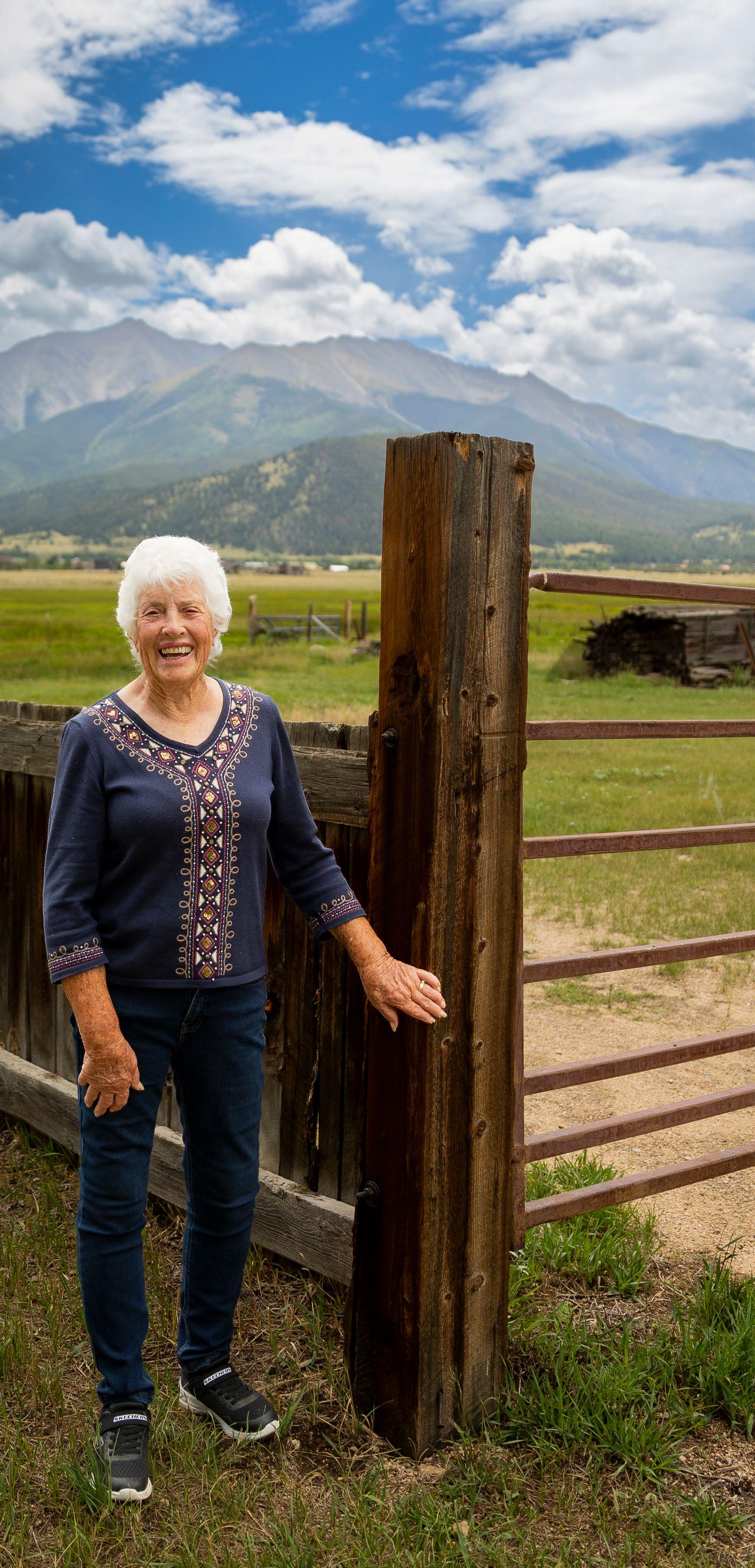
BY PAMELA A. KEENE
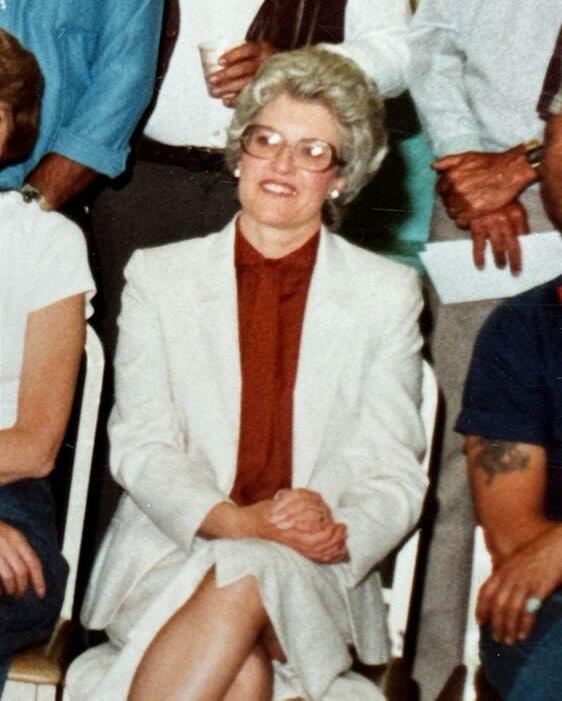
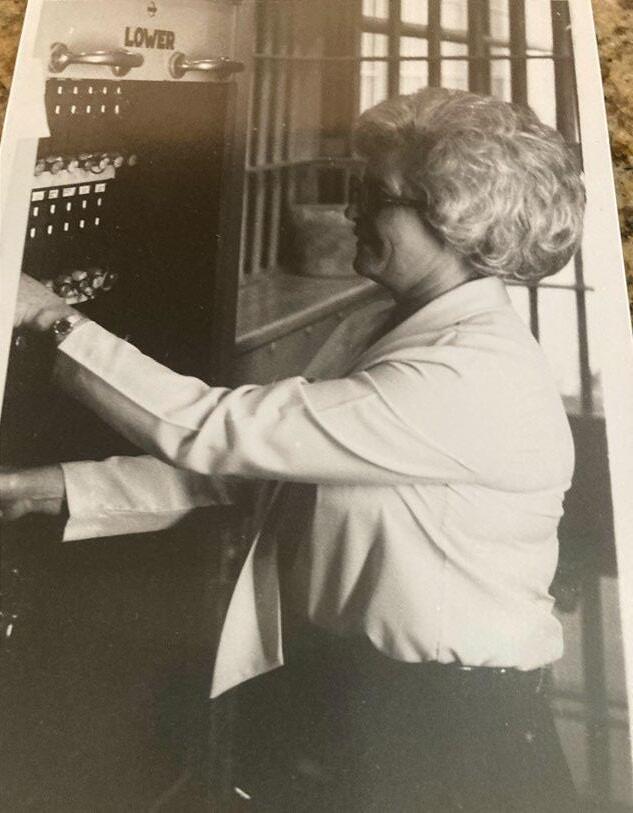

Don’t ask Connie Hatfield if she’s ever planning to slow down. You’ll hear a resounding “no!” In many ways she’s even more busy today than when she worked full time, including nearly 30 years as a corrections officer at the Buena Vista Correctional Facility.
At 88, she’s still living a full life, walking six or so miles each day, and simply enjoying the surrounding scenery of the four Collegiate Peaks. She also keeps up with her adult children, her five grandchildren, and four great-grands.
As one of six siblings growing up in Jackson, Wyoming, Connie came from hardworking, determined, and industrious roots. Her dad’s side of the family — the Roberstons — pioneered the Jackson Valley; he did tradesman work and raised a few cows. Connie’s mom traveled alone by train to Jackson from Michigan when she was 13 years old to help with her sister’s family.
The family home had no electricity or running water until the 1950s. Connie’s mom built a fire each day to cook meals. And in the cold and unforgiving winters, Connie and her sisters slept in a feather bed huddled together to keep warm.
Her upbringing was rugged and unique. “We didn’t have much really, we were so darned poor,” she said. “Looking back, I guess you could say I’m glad we grew up that way, because we didn’t need anything. We were happy with what we had. We just learned to manage.”
After one year of college, Connie took a job as a clerk typist in Jackson at the Agriculture Stabilization and Conservation Service.
Over the next few years she worked in the office at General Dynamics at Warren Air Force Base in Cheyenne.
Connie and her husband, Russell, met by chance in 1958 at the Log Cabin Dance Hall in Jackson, when he asked her to dance. A masonry contractor from Laramie, Russell was in town working on a construction project at the Jackson Airport. They married about 6 months later.
“Being from Colorado, Russell wanted to move back there, so in 1966 we settled in Buena Vista where we bought a 65-acre ranch,” she said. “This is such a beautiful part of the state; we just fell in love with it.”
“The ranch had a trailer where we lived until we built our house, and that’s where we raised our three children. It’s where I still live today.”
In 1967, Connie took a job as a secretary at the Buena Vista Correctional Facility, not knowing that she would stay there for the rest of her working life.
“Taking that job was probably one of the wisest decisions I made in my life, even though I didn’t realize it at the time,” she said. “At first I was just typing records and diagnostic reports, but within a few years I was talking to the inmates to write up their social histories.”
After several years, she and the only other female secretary were reclassified as sergeants. However, men in the prison system doing the same work were lieutenants.
“That said to me that this is a man’s world, because we were only sergeants. My friend and I appealed, but lost,” Connie said. “I just went back to my work and kept doing what I was doing.”
Several years later a lieutenant’s job came open, and she had a chance to have a job title that reflected her responsibilities. She and her friend both applied.
“I prayed about it, thought about it really hard because I wanted the job, but she was my friend. The day before the interview, I withdrew my name,” she said. “I knew she
needed this job more than I did; I thought, ‘My day will come.’”
Later, Connie’s responsibilities broadened to handle case management, inmate supervision, plus assisting with work and vocational assignments.
“As a case manager, I had a caseload of more than a hundred inmates,” she said. “It was my responsibility to call them to my office if they filled out a request to see me and make suggestions to their problems. Sometimes it was issues with other inmates, family problems, work assignments, and other staff.”
If an inmate didn’t request a visit with her each month, she would initiate a meeting just to see how things were going. She had to keep track of all the inmates and write up prisoners for various infractions including alcohol in their cells, rowdy behavior, or refusals to follow the rules.
“One of the first days I worked in the cellblock, I smelled jack — alcohol — coming from one of the cells, so I told a lieutenant about it. He took a walk but said he didn’t smell anything until he opened up the empty cell and saw the brew in the wastebasket.”
“When the inmates returned to their cells later, one of them found out what had happened and confronted me: ‘Who’s your snitch?’ he asked. My response: I pointed at my nose and said, ‘See this? I don’t need a snitch.’ I wrote up my first report that morning.”
Time and again, she said, she was tested by various prisoners. “It was their way of dealing with having a female in this kind of job, but I always stood my ground. I was 5 foot, 2 inches tall and weighed 115 pounds. My size could have put me at a disadvantage, but I didn’t let it.”
Connie said she couldn’t be scared to work in the cell block, because she’d been working at the prison for more than a dozen years already. Her attitude, her sense of humor, and her outlook kept her safe. “I
could break up a fight better than the men on staff, and it only took one time to prove it,” she said, smiling.
“Once, two inmates got into a fight. As I got between them to break it up, I yelled, ‘You guys, knock it off,’” and I heard another inmate say, ‘Don’t hit the lady.’”
“It was up to me to break up the fight and handle the situation, so I locked one of them in his cell and told the other one to go down and wait by the desk. Then I got him locked in his cell. By then, the intervening inmate had already gone back to his with no problem.”
One day as inmates were returning from lunch, she was knocked down when an inmate jumped her.
“It made a lot of noise and could have been a problem,” she recalled. “Coincidentally, I had taken sexual assault training the day before — and while this wasn’t that kind of situation, I had learned that by grabbing a finger and bending it back as hard as possible, you can get anyone to do just about anything. It worked.”
“I couldn’t believe how many inmates came to me afterwards to apologize for that one inmate’s actions.”
Connie said she’s a big believer in giving people the benefit of the doubt and having patience. It paid off. In 1984, another opening came up for a lieutenant case manager; Connie’s name was at the top of the list.
“I’d done well on the written test, but the actual verbal interview was a bit tougher. So I just sat down and wrote up my history: I’d gone to college and earned my two-year degree in corrections, taken many classes, and undergone all kinds of training to keep up with the changes over the past 18 years. I had been doing case work from the beginning of my time there, and I had done a good job,” she said matter-of-factly. “I got the job.”
Connie remained in that role until she retired in 1994 from her job after 27 years of service.
I hope they learned from me because I certainly learned from them over the years. The bad thing is that you never really know what happened to those inmates. I just hope they have made a good life.”
— Connie Hatfield

She looks back on that time with mixed emotions.
She said there were plenty of times when she was in those cellblocks and inmates would sit beside her desk and talk with her. “I’d just listen, and I think that’s all they really needed — someone to pay attention to them and actually hear them.”
Connie recalled some of the things they said to her over the years. One young inmate was from a very wealthy family in Colorado Springs. He worked as her clerk and wanted to know why he had to wear orange when he went to court. “I explained to him that he was an inmate and that’s how it’s done. His reply? ‘I never thought I’d learn anything from a little old gray-haired lady in prison.’”
Another inmate told her she was the funniest person he knew. She said they always called her Mrs. Hatfield. “I knew — and they knew — that I had the upper hand,
but I was never too forceful.”
“I hope they learned from me because I certainly learned from them over the years.”
Does she have any regrets?
“The bad thing is that you never really know what happened to those inmates. I just hope they have made a good life,” she said.
In addition to her career at the prison, she worked side by side with Russell both in his masonry business and in raising registered cows; she handled paperwork and keeping all the records.
“He kept telling me to retire,” she said. “About five years after I did, he just decided to sell all the cattle and buy a truck big enough to pull a fifth wheel.”
They traveled in the fifth wheel back and forth from Buena Vista to Tonto Basin, Arizona, in the winter, later purchasing a park model there.
Russell died in 2011. She continued to travel back and forth to Arizona for about 10 more years.
When she talks about Russell, her voice softens.
“We had a good married life together. He was a kind man, a good partner, a good dancer, and very good looking,” she recalled. “You could say that we were like bookends. He died just one week before our 53rd wedding anniversary. I sure have missed him.”
She sold the park model in Arizona to focus on life in Buena Vista. Her children, grandchildren, and great-grandchildren come to visit. Lunches with good friends and weekly card games fill her time. She takes her long walks and reflects on her life.
“I’m thankful for the good life I’ve had and the people in it,” Connie said softly. “I’ve made good choices and am glad for the way things have turned out.”
Pamela A. Keene writes personality profiles, and lifestyle, gardening, travel, health care, and consumer articles. She is an avid gardener, has visited seven continents, and is an award-winning photographer.

BY MARY PECK

October’s traditions of football, leaf peeping, Halloween, and all things pumpkin spice include the annual celebration of Cooperative Month — a month dedicated to recognizing the vital service that cooperative businesses deliver to local economies and communities across the United States.
The designated month is an opportunity for co-ops to educate their members on the unique structure and purpose of co-ops: They are owned and operated by their members, who share in both the benefits and the profits of the business.
The cooperative business model operates in diverse sectors including agriculture, finance, housing, and, of course, energy. Colorado alone is home to 22 electric cooperatives. Collectively, they serve nearly 1.5 million electric customers in territories that cover more than 70% of the state’s landmass.
Co-ops are founded on principles of democracy, equality, and cooperation. By focusing on member needs rather than maximizing profit, co-ops ensure that economic power is evenly distributed and that resources are used to benefit
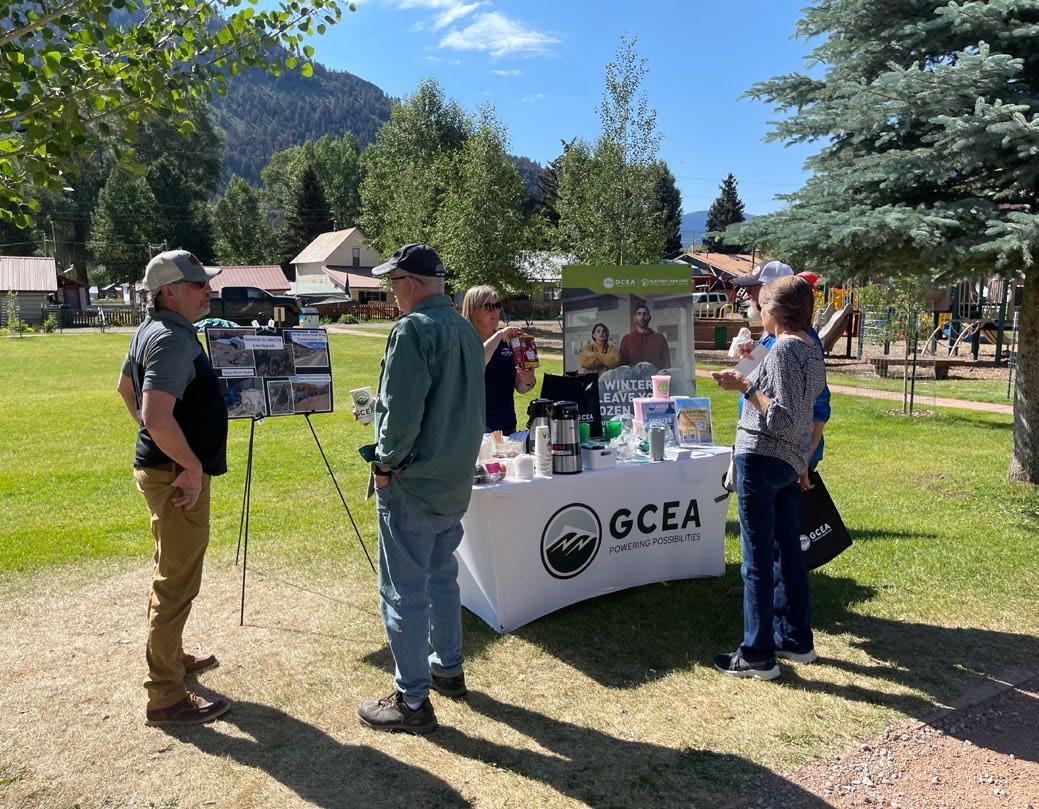
members and communities. Co-ops are guided by seven cooperative principles including voluntary and open membership, democratic member control, and concern for the community.
Co-op Month is more than a celebration; it also serves as a reminder of the power of community and the importance of business models that prioritize people over profits.
Highline Electric Association is all in during Cooperative Month; last year it rented out the theaters in Julesburg and Holyoke and invited members to a two-part movie series, showing Hotel Transylvania 1 and 2. This year, the Holyoke-based co-op is offering promotional coupons for local pumpkin patches throughout October. Highline’s Member Services Specialist Jessie Heath said the idea is to offer some fall fun to co-op members while encouraging them to support local businesses.
October is a great time to increase overall awareness and information about co-ops, but Colorado’s electric cooperatives serve their communities in caring and creative ways year-round.
“In 2021, Highline started volunteering to work the community concession stand at the Phillips County Fair,” Heath said. “Proceeds from this go to the local food banks and pantries in Phillips County.”
On the Western Slope, Gunnison County Electric Association invites members to Coffee with Your Co-op and other events throughout the year. At these events, the co-op provides information about ways members can electrify to reduce carbon emissions while saving money. Members learn how the co-op’s programs work, including community solar, net-metering, rebates, and GCEA’s electric vehicle loaner program.
GCEA’s Member Relations Supervisor Alliy Sahagun shared that members appreciate the chance to learn new ways to save money and help reduce greenhouse gas emissions. “Our co-op is run by people who live in our community, so when we hold events in various parts of our service territory, members love to come out and see us because we are their neighbors and friends,” she said.
In San Isabel Electric’s service territory in southern Colorado, Communications

The cooperative business model is governed by a set of seven key principles. They were originally compiled by Charles Howarth, a founder of the Rochdale Society of Equitable Pioneers — an early co-op for laborers — in England in 1844. Learn more about the meaning behind each principle at CREA’s website: crea.coop/our-mission/7-co-opprinciples/
Manager Paris Daugherty said that one of its unique and most popular outreach efforts is the co-op’s food trailer.
“We bring the food trailer to different locations throughout the warmer months and serve free hot dogs,” Daugherty said. “There’s no agenda, just sharing some delicious hot dogs with members and a chance to talk to people from the co-op face-to-face about anything they’d like.”
Morgan County REA’s members are treated to a member appreciation picnic every June at the co-op’s headquarters in Fort Morgan. Along with the draw of great food, members get to visit their cooperative, and see safety demonstrations and electric vehicles on display; they also have a chance to take home a door prize.
“We have had increased attendance every year,” Communications Director Maddie Pollart said. “People love the chance to come eat, catch up with friends, and check in with their local electric cooperative.”
Colorado’s electric co-ops have been essential to their communities for nearly a century. In an ever-changing world, they naturally continue to grow and evolve. Yet the co-op commitment to equity, member control, and service to the community remains constant.
“Morgan County REA’s history and the history of this area are woven together,” Pollart said. “Many MCREA employees are also members of the communities we serve. The small-town values that make our area special are the same values that make up the cooperative model.”
Mary Peck is a freelance writer based in Northern Colorado and enjoys sharing stories of rural communities.

BY VICKI SPENCER MASTER GARDENER | GARDENING@COLORADOCOUNTRYLIFE.ORG
I’ve always loved science, so when a high school counselor encouraged me to take Latin, I agreed. It was the common language for scientific work in the Middle Ages and was used to name species of organisms. In the 18th century, Carolus Linnaeus continued using Latin when he established his system of binomial nomenclature to identify each kind of plant by genus and specific name. This system is still used to identify plants.
In high school, I didn’t realize my Latin lessons would have benefits extending far beyond the classroom. When I planted my first garden, I was pleased to find I was not intimidated or confused by flowers’ Latin names. However, like most people, I typically refer to plants by their easier to remember common names.
The common name for Allium is ornamental onion, but “allium” means garlic in Latin. The Allium genus includes onions, chives, leeks, as well as garlic. It’s a distinctive garden plant with long stems supporting globe-like blooms composed of hundreds of densely packed individual flowers.
A delightful feature of Allium is that it comes in various heights and colors with
different bloom times. This variation allows you to incorporate Allium in different garden designs. Larger varieties such as Gladiator, Goliath, and Globemaster grow 40 inches tall with flower heads nearly 8 inches wide. These varieties are particularly powerful when mixed among other plants. You can achieve color variation by planting Red Mohican which features deep-red heads extending above tiny white florets, or Zamin with its lovely blue florets. You can achieve contrast with smaller varieties like Graceful Beauty Allium which grows 16–18 inches and blooms in early summer.
Long-lasting Allium can provide a colorful bridge while other flowers in your garden transition from spring to summer. After the Allium clusters fade and turn to seed, they retain their ball shape. No need to remove seed heads. They will continue adding interest and texture for weeks to come.
Since Allium are perennials, they can be instrumental in the design of a mature garden. They can be placed sporadically for interesting repetition throughout the garden. Or several Allium can be planted close together to create a forceful focal
point. They can be stunning when planted among ornamental grasses. Or they can be useful when planted with lavender and yarrow for a deer-resistant garden.
Allium bulbs should be planted in the fall before the ground freezes. Although fairly tolerant of any type of soil, they should be placed in well-drained areas because the bulbs could rot from too much moisture, especially during dormancy. Gardeners are particularly fond of Allium because they typically remain pest free and are even known to repel aphids and other pests.
Master gardener Vicki Spencer has an eclectic background in conservation, water, natural resources, and more.

This month, CCL is giving away a package of 20 Heavenly Hues Allium bulbs from Breck’s for you to plant in your garden this fall. Find the entry form online at www.coloradocountrylife.coop/ monthly-contests . Or enter by mailing your name, address, phone number, and the name of your electric co-op to CONTESTS c/o CCL 5400 Washington St., Denver, CO 80216. ENTER TO WIN!

BY DENNIS E. SMITH
Iwas in the driveway loading my car with fishing gear one rainy afternoon not long ago when a red-tailed hawk sailed over my head so low I could have hit it with a broomstick. It was clutching a dead bird in its talons, probably a dove. It floated across the street, lit atop the neighbor’s cucumber trellis, and began feeding on its prey. My camera was sitting on the front seat of the car, so naturally I wondered if the hawk would let me take its picture.
I began snapping pictures from where I stood because I figured he would fly off the minute he saw me take a step in his direction. I assumed it was a male, but I honestly couldn’t tell you because the males and females look a lot alike. And, while females are usually significantly larger and heavier than males, that distinction is difficult to make unless both members of a pair are together. In this case, there was only the one. I am fairly certain it was a young bird, though, because it still bore the darkcolored horizontal tail bands of a juvenile. Apparently, they retain those color bands until they are 1 to 1 1/2-years-old, after which they acquire the solid, red-brown tail colors for which they are named. Interestingly, though, not all red-tail hawks have red tails. Their tail feathers can vary from reddish-brown to black and sometimes even white — and several shades in between. There are regional differences, too: Eastern populations have
slightly shorter wings, white throats, white breasts, and a well-defined band across the belly. Western birds are more variable with light and dark phases, streaked or mottled tails, and so on. Some sources recognize at least a dozen subspecies of red-tailed hawks. Consider that they look very similar to Swainson’s, broad-winged, red-shouldered, and rough-legged hawks, and you can understand why most of us find them tricky to identify.
A few years ago I was sitting in my chair in the living room when a tremendous crash at the nearby window scared the you-knowwhat out of me. I looked up to see a puff of feathers floating in the air and a splotch of feathers and “stuff” smeared across the pane. I assumed a dove had slammed into the window, but when I went outside to check, I found a huge red-tailed hawk lying on his back, shredding a Eurasian collared dove.
100% online.
D E G R E E S :
Master of Education
Doctor of Educational Leadership
Principal Licensure

CONTACT US: 719-549-2200 csupueblo online


SEPTEMBER GIVEAWAY WINNER!
The hawk gave me a very indignant look, righted itself, and lumbered into the air on enormous 4-foot wings, the hapless dove still clenched in those fierce talons. I hollered at him — “Don’t ever do that again!”— went back inside, and immediately poured myself a tranquilizer. I also moved the chair to a safer place.
Dennis Smith is a freelance outdoors writer and photographer whose work appears nationally. He lives in Loveland.

Ruth Goodger, a Grand Valley Power member, won the Bamboozle countertop composting bin.






SEE YOUR AD HERE!
Contact us at advertising@coloradocountrylife.org

•
• The Homestead
• Nature’s Homes
•
• $150 first place
• $75 second place
•

• Each person may submit up to two photos per category.
• Digital JPEG photos only.
• Photos must be at least 300 dpi at 8" x 10".
• All vertical photos will be considered for the cover photo. If you have a photo you think will make the perfect cover of CCL, it must be at least 300 dpi at 9" wide x 13" tall.
• Winners will be announced and published in a Spring 2025 issue.
• The contest is open only to members of a Colorado electric co-op.
• The contest is open for entries through Friday, December 1, 2024. See full rules and enter online at www.coloradocountrylife.coop/2025photocontest . Scan the QR code with your smartphone to go directly to the entry form on our website.

Summer has now ended and The equinox has passed.
Slumber nights have begun their waxing Fields rich in growing greens have gasped their last …
So cry, cringing Cottonwoods …
And you, too, auburn Ash …
Shed your tears on your leaves
Yet another hotter season has flashed …
As the sun still shines shrill
Over cornstalks proud and tall
Pumpkin patches grow pregnant so
Very soon — sweet ears and pies for all.
But, remember, in December comes winter’s first seize,
Yes, fare-thee-well, solemn autumn as Orion draws nigh
His winds whistle lonely … Earth moans in sharp freeze:
All northerns shiver and shudder and bid heat, “Good-bye.”
So let us huddle deep, my friends, and hibernate fetally
And thank God for ALL seasons as we dream of spring’s breeze …
William Penfield, Berthoud Poudre Valley REA member
The spirit of Fall is upon us
With its leaves so crisp: Crinkle, crackle, snap,
As the sharp wind howls.
Colors that shift and change, The trees that peacock their beauty, And drop the pinecones from their boughs.
The spirit of Fall is drawing near
With cinnamon and spice:
Dotting the stores,
With decorations, preparations
For Halloween and Thanksgiving.
We gather together to sing and praise, Love and laugh, bundle up tight.
Watch a fire that flickers and sways in the night.
The Spirit of Fall is here.
Zoe Ellsaesser, Berthoud Poudre Valley REA member


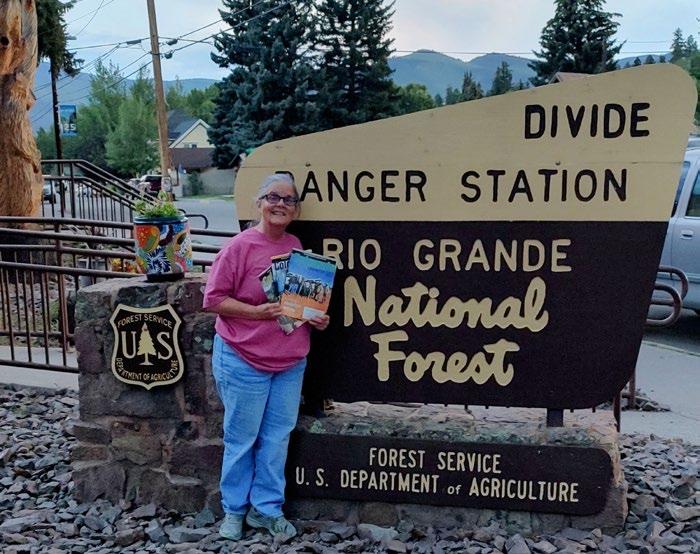


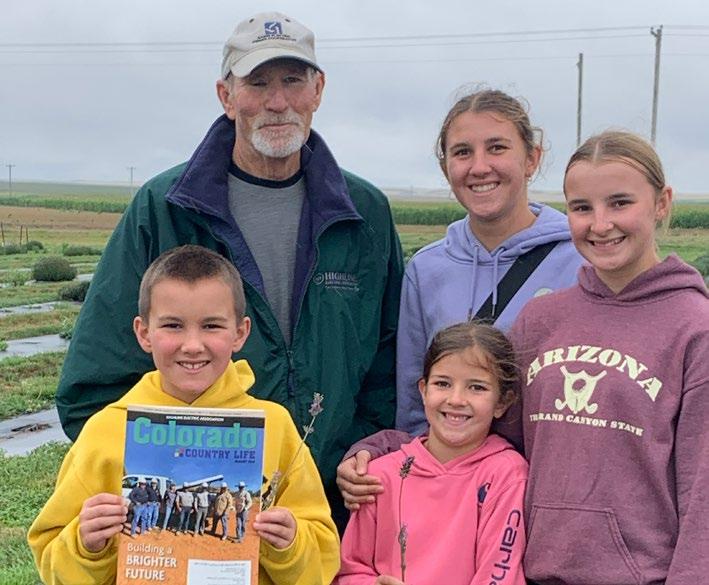


writer Becky Jensen thru hikes the Colorado Trail this summer. Here she stops at Taylor Lake near Kennebec Pass to get a photo with the CCL cover of the same place. Becky said, “After days of thunderstorms, we were soaked and it’s a miracle I managed to keep the magazine dry for this photo. Just that morning, my son Jake and I hiked through frigid, sideways rain to climb and descend Indian Trail Ridge — all above 12,000 feet — just before we reached Taylor Lake. But the rain stopped as we descended, and we got the shot.”

Take Your Photo with Your Magazine and Win!
Show us where you enjoy CCL for a chance to win! Simply take a photo of someone (or a selfie!) with the magazine, and share it with us on the Reader Engagement page at www.coloradocountrylife.coop. Each month we’ll draw one photo to win $25. See all the submitted photos on our Facebook page, @COCountryLife.
The shorter days of October are upon us. For some, that may mean more time indoors in front of the television, baking, or perhaps sitting with a good book. But for others, it’s another month of continual indulgence in honing one’s craft or enjoying someone else’s. As we celebrate World Handmade Day this fall, we’ve found some Colorado artisans and the treasures they create.
BY GAYLENE GARCIA GRANGER


Ever wonder what you would look like if you lived during a different time in history? Well, we know a Colorado photographer who can show you. Tim Brown uses the tintype process to create the most surreal and captivating photographs that look like one of your grandmother’s keepsakes. Brown’s custom-built studio, with expansive window lighting, is one of only two in the entire United States that is made specifically for this art and passion. Each photo is taken using the natural light, and prints are developed in his darkroom. Brown shows his clients the entire process, including the unique nuances of costumed posing, the specifically timed exposure, and the hand-pouring of the chemicals that make each photo custom and unique. The result is a stunning photograph made of silver that will last more than a lifetime. To book your session and have a blast from the past, visit timbrownphotography.com




No matter what kind of day you’re having, seeing Holly Halter’s craft will bring a smile to your face. She says, “The theme of my work is whimsy both to celebrate what is good in our world and to provide an escape from what is not good in our world.” She was commissioned to decorate the Gunnison community garden and made colorful flowers out of aluminum cans. Her whimsical art can be found on note cards, Christmas ornaments, and greeting cards. To purchase or view Holly’s handmade art visit Hippie Chick’s Facebook page @holly.halter.75 or pop into the Gunnison Gallery on Main Street.




One look at Leigha Nicole’s artwork will tell you that a lot of time has gone into creating it. Nicole studied her craft with teacher Dr. Ning Yeh in the Po Mo (throw ink) style of Chinese brush painting. Her work has since evolved over time, and her own style has become a combination of traditional Chinese brush painting, Sumi-e, and Western watercolor. Today she uses watercolors and ink on handmade rice paper to create interpretations of nature and wildlife, often featuring the Sangre de Cristo Mountains. Nicole offers virtual and in-person private and group painting classes out of her studio in Crestone. Book your spot at splendidartwork.blogspot. com You can also see her work at www.crestoneartisansgallery.com/ leigha-nicole




FINANCE ENERGY EFFICIENT HOME UPGRADES WITH SANGRE DE CRISTO ELECTRIC
Co-op members can now make selected upgrades for their home or business with no money down, no credit check and low interest rates. Together we can Electrify and Save.


Any
and